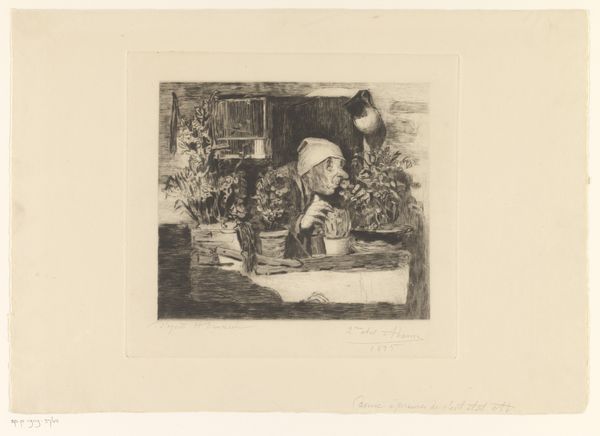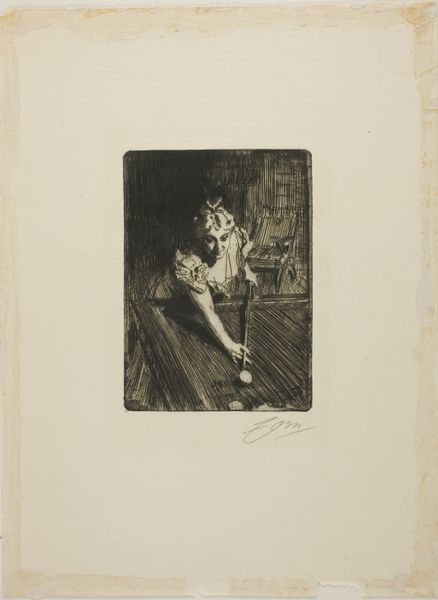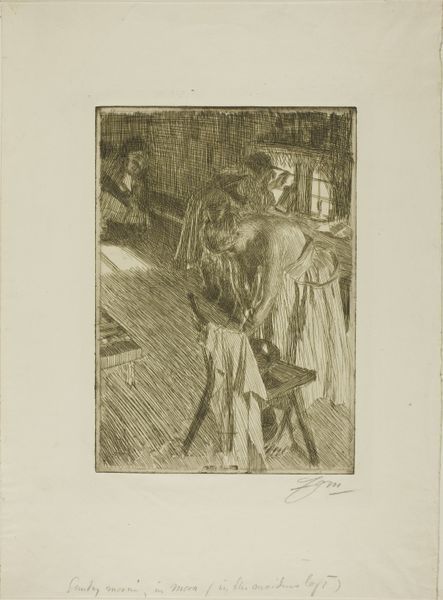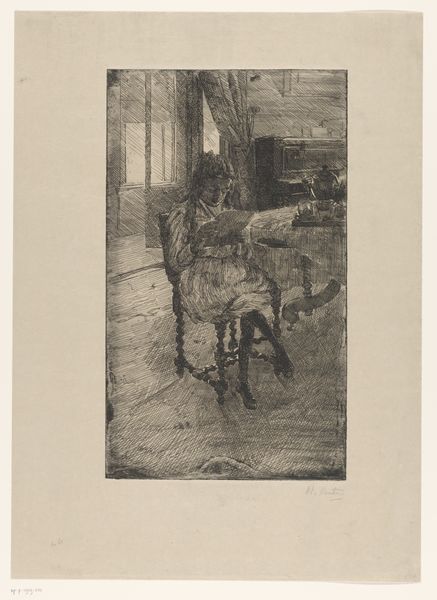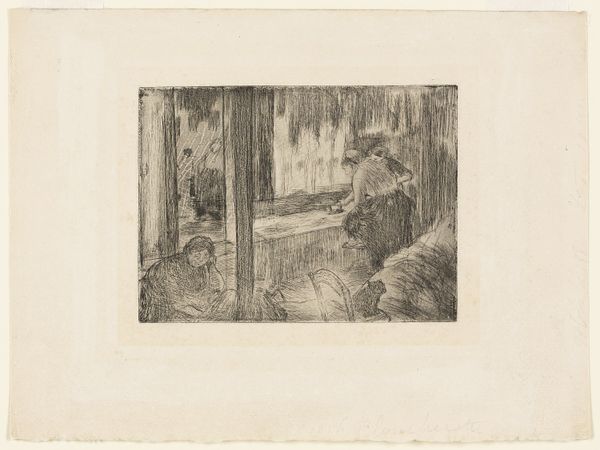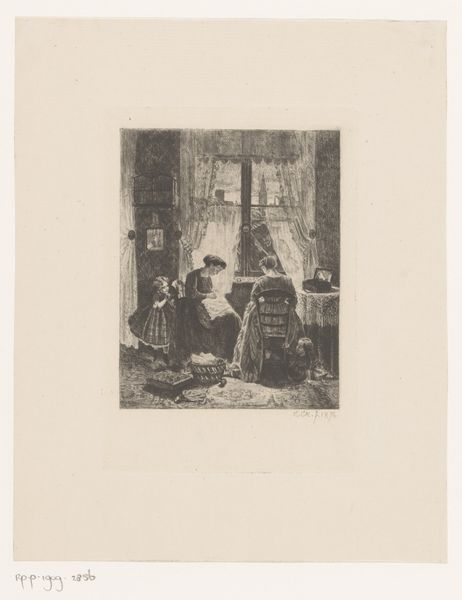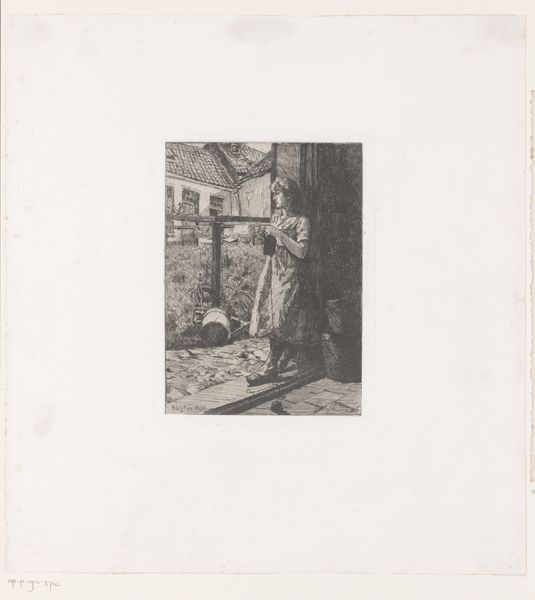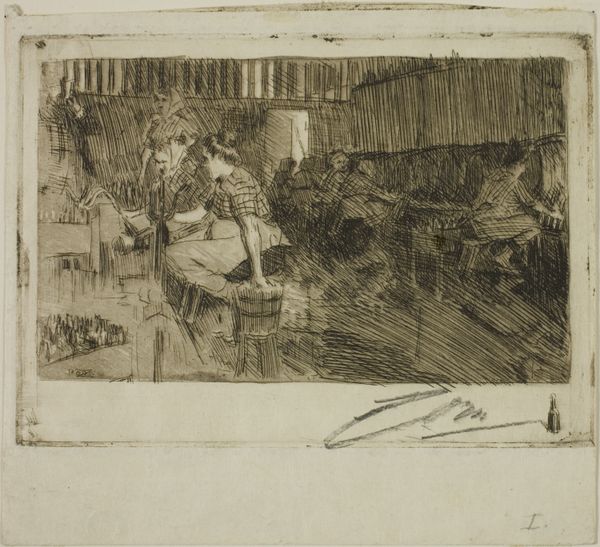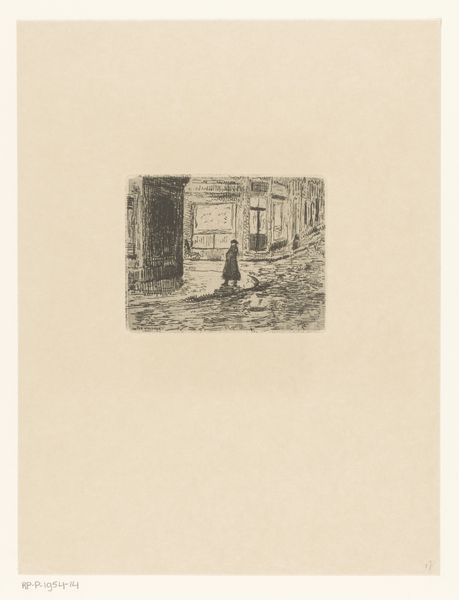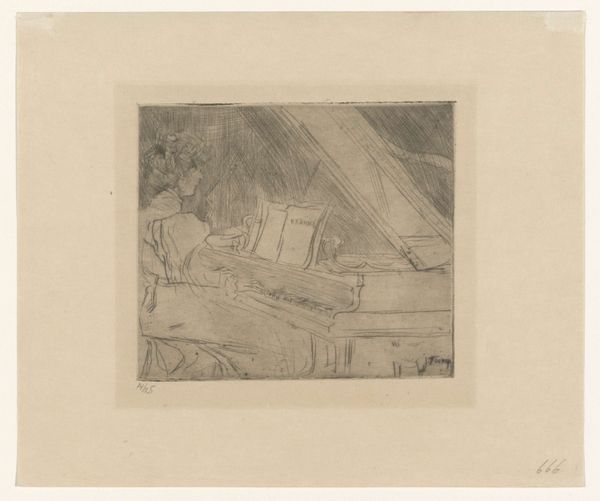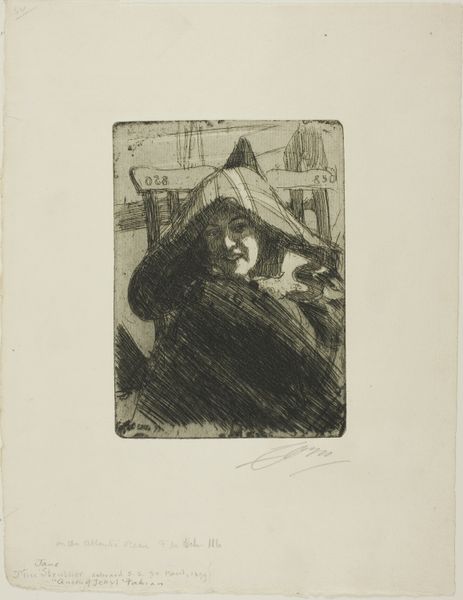
Dimensions: 225 × 150 mm (image); 234 × 152 mm (plate); 425 × 349 mm (sheet)
Copyright: Public Domain
Curator: This is Anders Zorn's etching, "Albert Besnard and His Model," dating back to 1896. The print is currently held in the Art Institute of Chicago. Editor: There's an intriguing sense of quiet domesticity, a glimpse into the private world of the artist at work. The sharp, contrasting lines certainly add depth and texture, almost as if the image were sculpted onto the paper. Curator: Absolutely. The scene captures a unique dynamic – Besnard, another well-known artist himself, portrayed with his model. It becomes a kind of layered intimacy; artist observing artist observing model. Think of it as the embodiment of turn-of-the-century artistic circles and their obsessions. Editor: Zorn's mark-making is so distinctive here, creating varied planes. Look how the light appears to cascade across Besnard’s textured coat versus the gentle shading of the model’s dress. A superb contrast in application! It evokes the influence of Japanese prints with its strong diagonal compositions. Curator: Zorn’s style echoes that era’s broader fascination with Impressionism and intimate realism. The work also holds cultural echoes; there’s a sense of the artist as both a worker and an observer, engaged in the act of creation yet somewhat detached. Editor: I appreciate the tonal gradations he coaxes from the etching process. Zorn harnesses shadow to direct the gaze of the viewer. The dark strokes around the artist himself, framed by his hat, really anchor your attention. Curator: Considering the time, this work mirrors the rise of Intimism in art, focusing on the private, often domestic moments and their underlying emotional resonances. Editor: Definitely. It is as though we are catching the artist off-guard. Overall, a marvelous balance of light, shade, and composition makes for a strikingly poignant work of art. Curator: It really captures a complex network of artistic influence and personal relationships within the Parisian art world at the end of the nineteenth century. Editor: Indeed, Zorn’s skill reveals more than a visual portrayal. He creates a spatial interplay of surfaces.
Comments
No comments
Be the first to comment and join the conversation on the ultimate creative platform.
